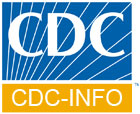Skip directly to the search box, site navigation, or content.
Division of Foodborne, Bacterial and Mycotic Diseases (DFBMD)
Dermatophytes (Ringworm)
Frequently Asked Questions
- What are dermatophytes?
- Who gets dermatophyte infections?
- How are dermatophyte infections spread?
- What are the symptoms of a dermatophyte infection?
- How soon do symptoms appear?
- If I have symptoms, should I see my doctor?
- How is a dermatophyte infection diagnosed?
- How can dermatophyte infections be treated?
- How can dermatophyte infections be prevented?
- There is a ringworm outbreak in my child’s school/daycare center. What should I do?
- My pet has ringworm and I am worried about ringworm in my house. What should I do?
Dermatophytes are types of fungi that cause common skin, hair and nail infections. Infections caused by these fungi are also known by the names “tinea” and “ringworm.” It is important to emphasize that “ringworm” is not caused by a worm, but rather by a type of fungus called a “dermatophyte.” One example of a very common dermatophyte infection is athlete’s foot, which is also called tinea pedis. Another common dermatophyte infection affecting the groin area is jock itch, also known as tinea cruris .
Trichophyton rubrum and Trichophyton tonsurans are two common dermatophytes. These two species are usually transmitted from person to person. Another common dermatophyte is Microsporum canis, which is transmitted from animals such as cats and dogs to people. Dermatophytes like to live on moist areas of the skin, such as places where there are skin folds. They can also contaminate items in the environment, such as clothing, towels and bedding.
Who gets dermatophyte infections?
Dermatophyte infections are very common. They can affect anyone, including people who are otherwise healthy. Dermatophyte infections may be more common among people with suppressed immune systems, people who use communal baths, and people who are involved in contact sports such as wrestling. Outbreaks of infections can occur in schools, households and institutional settings.
The dermatophyte infection that affects the scalp and hair is known as tinea capitis. It is especially common among school-aged children. For reasons that are not well understood, tinea capitis does not usually occur after puberty. Other kinds of dermatophyte infections tend to be more common in adolescents and adults.
How are dermatophyte infections spread?
Spread usually occurs through direct contact with an infected person or animal. Clothing, bedding and towels can also become contaminated and spread the infection.
What are the symptoms of a dermatophyte infection?
Dermatophyte infections can affect the skin on almost any area of the body, such as the scalp, legs, arms, feet, groin and nails. These infections are usually itchy. Redness, scaling, or fissuring of the skin, or a ring with irregular borders and a cleared central area may occur. If the infection involves the scalp, an area of hair loss may result. More aggressive infections may lead to an abscess or cellulitis. Areas infected by dermatophytes may become secondarily infected by bacteria.
Symptoms typically appear between 4 and 14 days following exposure.
If I have symptoms, should I see my doctor?
Yes. Most of the time these infections can be successfully treated with medication prescribed by your doctor.
How is a dermatophyte infection diagnosed?
Your doctor may make a presumptive diagnosis based on your symptoms and physical examination. To confirm the diagnosis your doctor may obtain scrapings of affected skin or clippings of affected nails. These may be examined under a microscope and may be sent to the laboratory for a fungal culture. Keep in mind that the results of the fungal culture may not be available for 2-4 weeks.
How can dermatophyte infections be treated?
The particular medication and duration of treatment is based on the location of the infection. Scalp infections usually require treatment with an oral antifungal medication. Infections of other areas of skin are usually treated with topical antifungal medications. Nail infections can be challenging to treat, and may be treated with oral and/or topical antifungal medications.
How can dermatophyte infections be prevented?
Good hygiene, such as regular handwashing, is important. People should avoid sharing hairbrushes, hats and other articles of clothing that may come into contact with infected areas. Pets with signs of skin disease should be evaluated by a veterinarian. Beauty salons and barbershops should disinfect instruments with approved disinfectants after each use. Contact your local and/or state health department for specific guidelines and regulations in your area.
There is a ringworm outbreak in my child’s school/daycare center. What should I do?
You should contact your local health department. Your local health department may have information about how long children with ringworm should remain out of school/daycare. Tell your child not to share personal items, such as clothing, hairbrushes and hats, with other people. Encourage frequent handwashing. Take your child to the pediatrician if she/he develops symptoms.
My pet has ringworm and I am worried about ringworm in my house. What should I do?
Make sure your pets have been evaluated by a veterinarian. If you develop symptoms, be sure to seek medical attention.
There are no federal guidelines about ringworm and environmental disinfection. Transmission of the infection may occur via direct contact with an infected person or animal or from contact with contaminated environmental surfaces. A reasonable approach is to perform regular cleaning to help remove spores from the environment. Make sure to use cleaning products according to the manufacturer’s labeling, and never mix cleaning products, as harmful fumes may result. For surfaces that are safe to bleach, a quarter-cup of bleach in a gallon of water can be used for disinfection. For fabric surfaces or soft items that are washable, a hot water wash and hot air drying may help to remove and kill spores.
Page last modified: March 27, 2008
Content Source: National Center for Zoonotic, Vector-Borne, and Enteric Diseases (ZVED)
Program Contents
Contact Information

